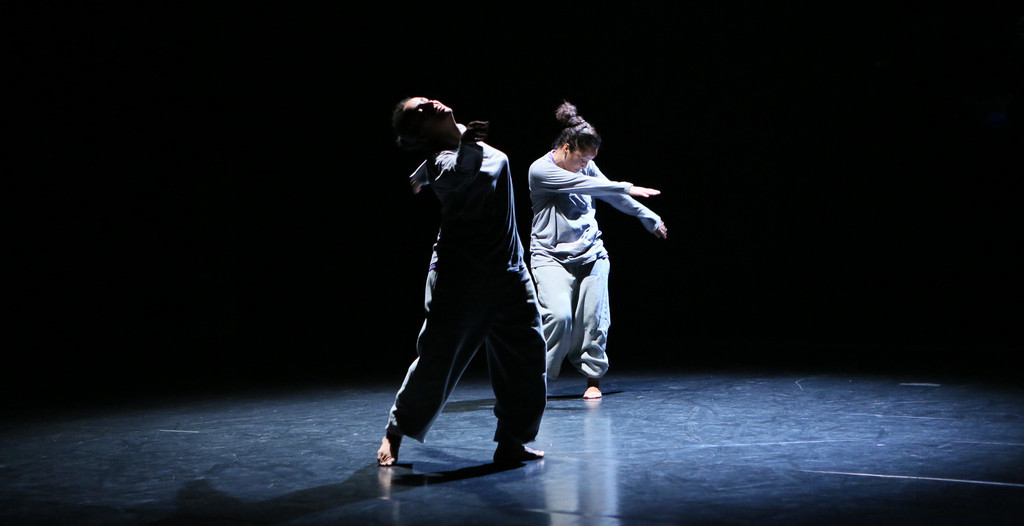TBA: Campagnie Nacera Belaza

Image: GK Wilson
Campagnie Nacera Belaza’s intriguing opening performance Thursday asked a lot of the audience. Or rather the audience had to ask a lot of itself. It begins with nearly imperceptible change from darkness to light and the Algerian-born, French-trained choreographer’s own movement from head down, arms out, to head up arms up. It’s a bit like watching a flower bloom—without the benefit of advanced-motion film.
Belaza blends two cultural contexts. Though she left Algeria at five, there’s no mistaking her interest in the rhythms and movements of Morth African music and dance. Most of all, she appears to be interested in the trance rituals. The syncopated rhythms and chanting that pervaded the soundtracks of the evening’s opening “Le Trait solos” mashed up with a single woman’s repetitions of gospel-like vocal motifs are transportive in and of themselves. But the flowering first solo and a second solo in which Nacera simply twirled recalled the kind of ecstatic dances still engaged in both N. Africa and Southern Black Churches. Yet the rigorous form in both was as modern as Merce.
Nacera Belaza: Le Trait solos and Le Temps Scelle
Con-Way
Fri, Sept 20 at 8:30
Nacera Belaza: Le Cri
Con-Way
Sat, Sept 21 at 8:30Belaza hails from the French dance world that produced Compagnie Maguy Marin. And as when that dance troop performed their demandingly evocative blend of theater and movement in Portland for the first time in the late ‘90s, a solid third of the TBA audience gave up at intermission. Indeed, so minimal was the first two dances’ movements, when the lights came up for the break, the audience (me among them) was befuddled: Is this just part of the show?
Those who stayed experienced Nacera and her sister, Dalila, performing a far different kind of dance. Or so it seemed. To an even more deeply patterned mash-up of North African rhythms, gospel, and a thumping baritone sax (or maybe bass clarinet) played as both wind instrument and drum, the duo moved in a liquidy form that at first seemed ecstatic but gradually showed its almost machine-like patterns—indeed, as their momentum grew, the music itself grew more abstracted. So much dance plays with or against the music it is set to, but is ultimately made to be a show. Belaza’s choreography is more about powerful relationship between the music, light, and dancers. The audience is merely invited to watch.
